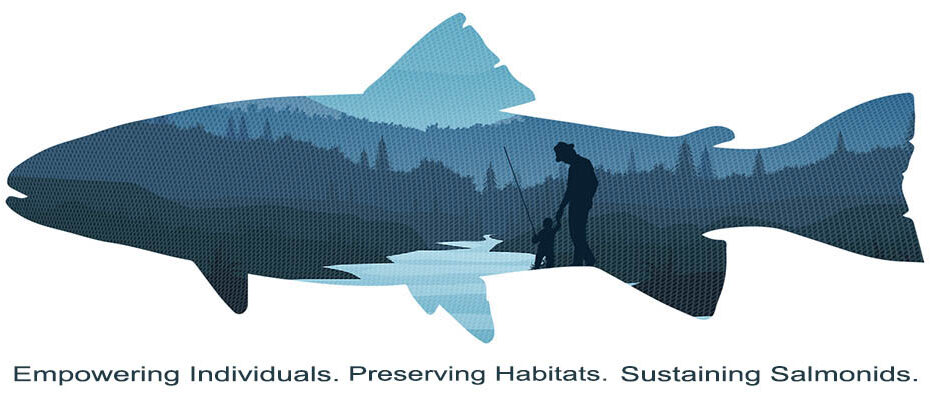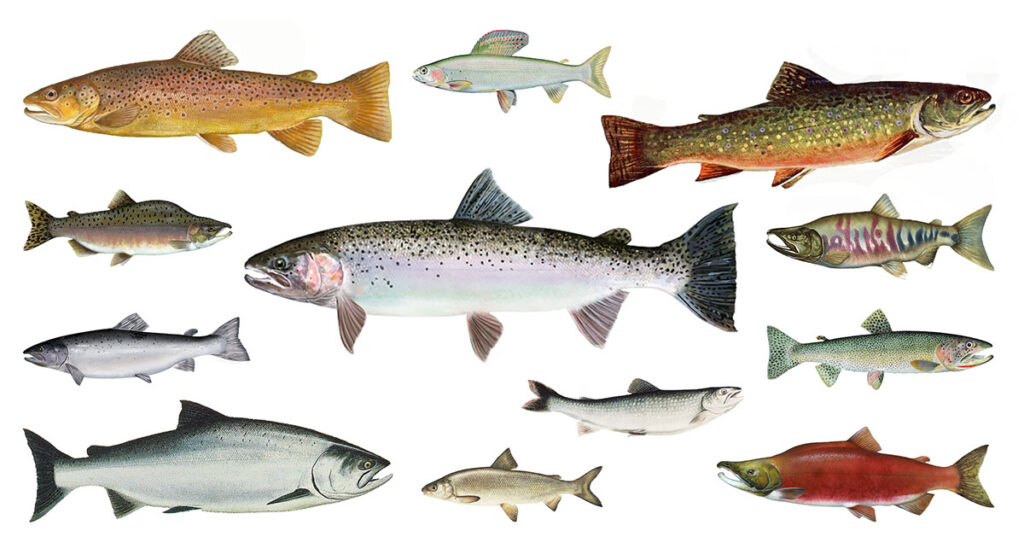Think Salmon is here for your salmotainment. Learn about the biology and ecology of some of the world’s most iconic fish, like chinook salmon, rainbow trout, Atlantic salmon, and Arctic char.
Dive deeper to learn why many species and populations are imperiled while others thrive.
Salmonids: Species of Salmon, Trout, Char, Whitefish, Grayling, & More
There are around 200 living species of fish in the Salmonidae family. This includes such iconic species as Atlantic salmon, rainbow trout and steelhead, brown trout, Arctic grayling, sockeye salmon, chinook, brook trout, and so many more. This page is dedicated to the most widespread and important species of salmonids.
The Life Cycle of Pacific Salmon
The life cycle of Pacific salmon is a complex and remarkable journey from freshwater streams to the ocean and back again. Along the way, they’re predators and prey to countless other species across the North Pacific basin. Salmon that survive their journey to spawn will perish shortly after. Well, most of the time.
The five North American species of Pacific salmon are remarkably popular fish. Chinook, coho, sockeye, chum, and pink salmon are cultural icons and cornerstone species throughout their native ranges. A sixth species, the masu salmon, is also deserving of attention.
Learn about the life cycle of these cornerstone species and deepen your appreciation for these remarkable fish.
The Trout and Salmon Encyclopedia
The Trout and Salmon Encyclopedia is a broad educational resource for the most important salmonid subjects. Learn about the many species of salmonids, the challenges they face, their biology and ecology, and much more.



